A very important part of Madrid's history has occurred thanks to the existence of trains, which were introduced into the daily life of the city's citizens from the start of the twentieth century and continue to play an imperative role in society today. The addition of high-speed trains to the Spanish rail network has helped to connect cities located very far from one another in very short periods of time: an example of this is the train from Madrid to Barcelona, which connects the cities in just three hours, unlike the alternative of a bus journey lasting eight hours.
The Railway Museum is a museum that I could happily call a "low cost attraction" (making it a suitable visit for those tourists who are a bit short of cash, or even for exchange students, whose budgets aren't particularly big).
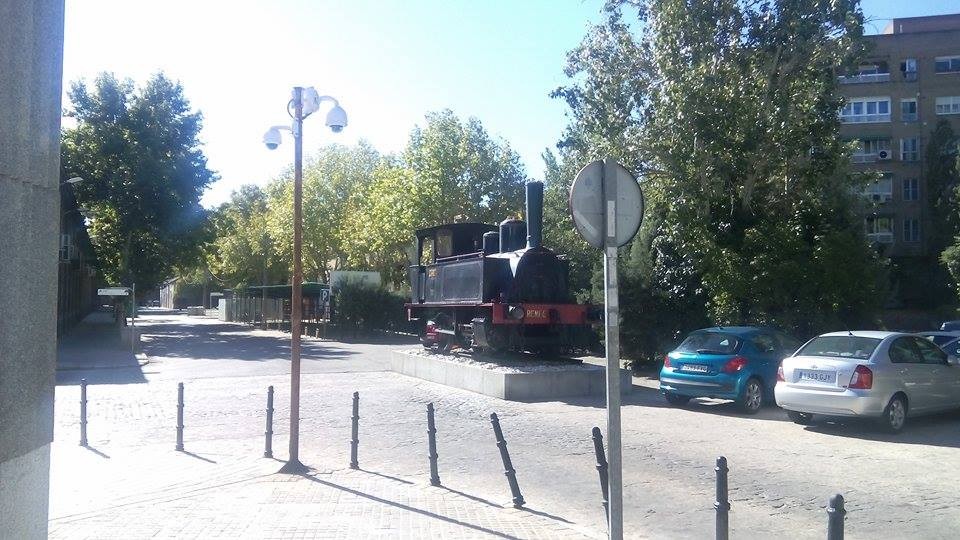
Upon the approach to the museum's entrance, an old locomotive will welcome you into the railway-orientated environment. One of the nicest things about this museum is that it's located inside an old train station, which has seen its architecture and construction preserved over the years, although if you look at it from above, it would seem somewhat abandoned given the rust that covers part of its structure.

Upon arrival at the ticket office, you will be met and welcomed by a small souvenir shop and four large trains. The adults try to keep a little bit of composure, but the children cannot hide their shock and excitement about seeing such machines right before their very eyes.
The museum has both a temporary exhibition room and a permanent one; the latter of which is located in the central nave of the building and marks the evolution of the trains and their function mechanisms. Within the central nave, there are four huge platforms, which mark the evolution of the trains in terms of both technology and design, so it's imperative that you start your tour from the right-hand side.
Platform I
On the first platform, you will find the very well-known steam engine, which kicks off the exhibition with the fifty-year-old Mikado locomotive. If you study either Electrical or Mechanical Engineering (like my friend who came with me does), one of the things that you are going to like the most is seeing how they work and what the pieces found inside them consist of, as it's actually split into sections, some of which are left exposed and uncovered for your viewing. This part is really cool, as it has nine different steam locomotives and each of the models has a different running-in. You will find some really old locomotives, some of which are almost 150 years old! Sadly, production of steam-powered engines ended in 1976, and this type of locomotive stopped operating upon their donation to the museum.
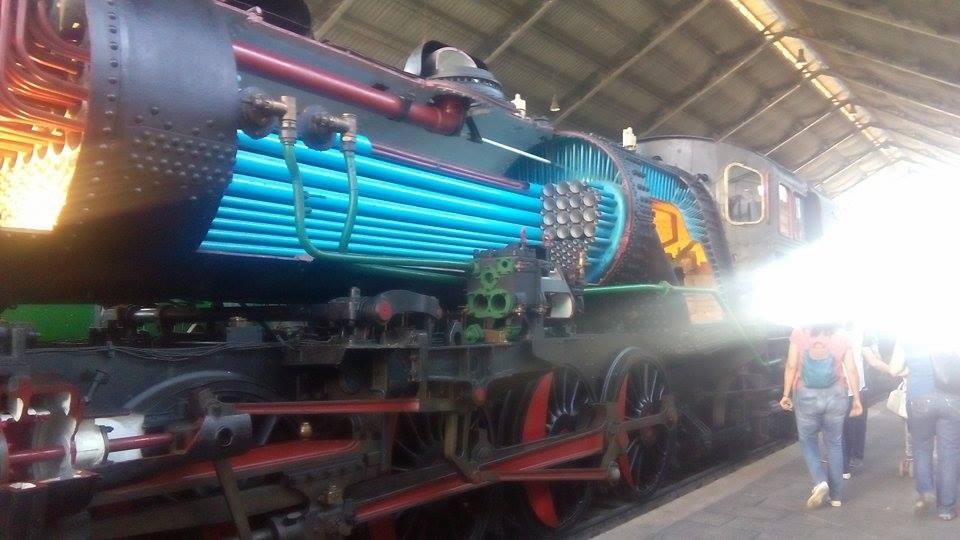
(Mikado locomotive with part of the engine open for public viewing)
One of the coolest and most dynamic things about the museum is that children can board some of the trains. Access is permitted to two locomotives in each nave, and there are large queues on many occasions, but it's really worth the wait.
Platform II
On the second platform, you will start to notice that the focus changes from steam engines to electric engines, which came to life as a solution to the consumption problems that the steam engine brought to the Spanish railways. Besides, it was just more reliable in general. In this section of the museum, there are seven locomotives: you will notice something similar about the first six, but the final one has a very peculiar design (electric three-phase locomotive #3), as, from its exterior, it gives the impression that it is covered with wood, which would have been considered a luxury 100 years ago.

Platform III
This particular platform focuses on diesel engines, which arrived in Spain between 1930 and 1950. Just like in the first nave, you will also find seven locomotives here: one of these locomotives is the only prototype left in the world of its type ("Locomotora de maniobras 10201 MZA"), which has a blue design and seems a bit excessive in size in my honest opinion. This model serves as the visual transition from the electric-powered locomotives to the diesel-powered ones.
In this section of the museum, you can see that the aesthetics of the trains improves vastly. Not only did they focus on making them faster, lighter and more efficient in this period of railway history, but they also started to include facilities to make them more luxurious and impressive from a passenger's perspective. It was also in this period that "social classes" were started to be introduced on the country's trains, creating divides and installing some luxuries for the high-paying customers, like air conditioning, for example.
Platform IV
This platform was my personal favourite out of all of those in the museum, as the trains have a very pretty design and are found to be in perfect condition. This will be any child´s favourite platform given that it's the one where they can most frequently board the trains. It's very interesting to think that, just fifty years ago, these trains were among the most comfortable and most luxurious in Spain, and now they are property of this museum thanks to their kind donation. Many of these carriages have been referred to as "lounge cars", for the level of comfort that they were known for back then, which meant the conductor could check the passengers' tickets whilst they relaxed in their individual compartments.
In this section, you will discover that the restaurant car (WR-3569) is occasionally used by museum personnel as a conference room. This carriage is usually used as a cafeteria, however, and although it's very small, you can still go in, even if it's just to see what it would have been like to have a coffee in there in the past. I recommend having a coffee there, as the car's interior has a unique and elegant design that will make you travel back in time.

(Cafeteria inside the carriage)
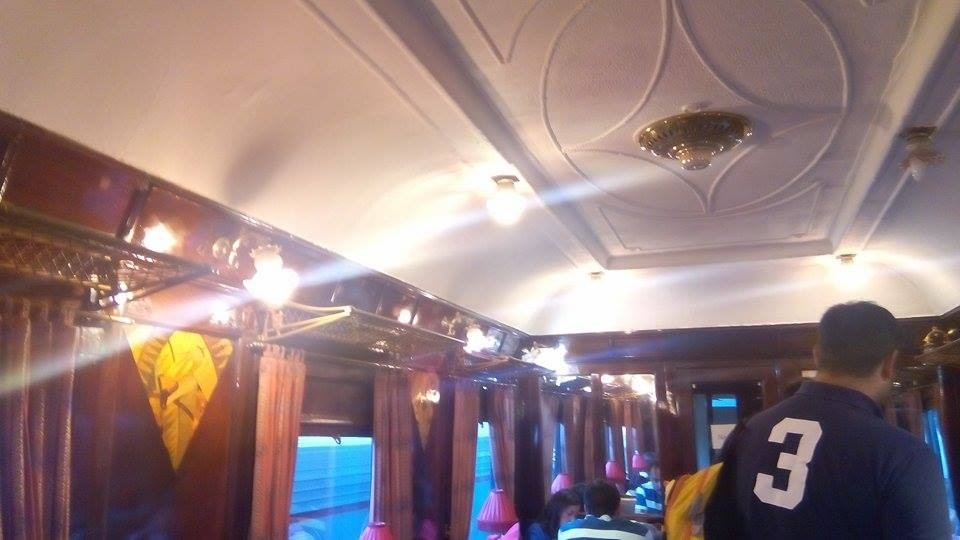
Many of the carriages in this section are furnished and decorated with the type of furnishings used in the last century to allow the tourist to appreciate what the toilets were like, for example, or the beds that were usually in the very small sleeping quarters. In one of the rooms, the first ever central heatings systems can be found along with an explanation of how they works (they were very pollutant). Sadly, the museum staff do not allow public access to this area, but don't be disheartened, you will be able to enter the following room!
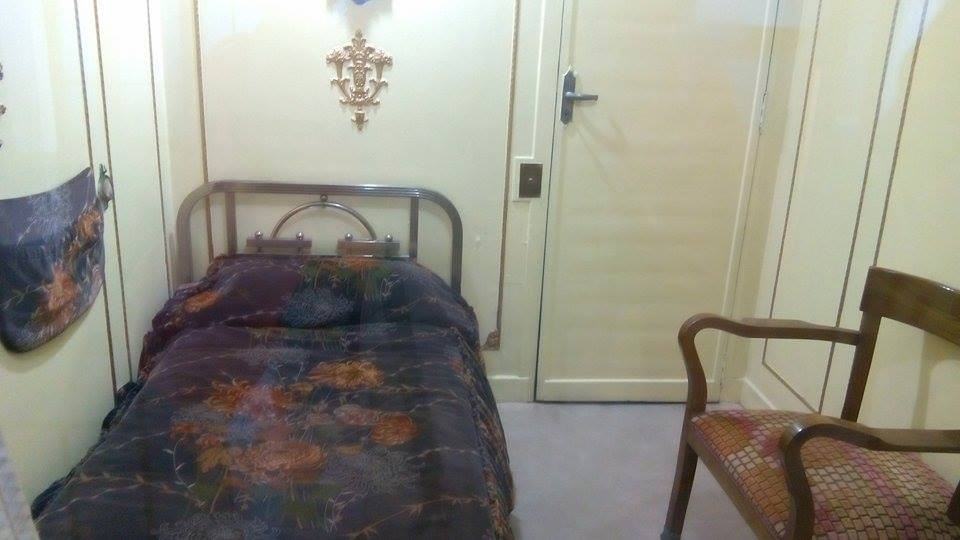
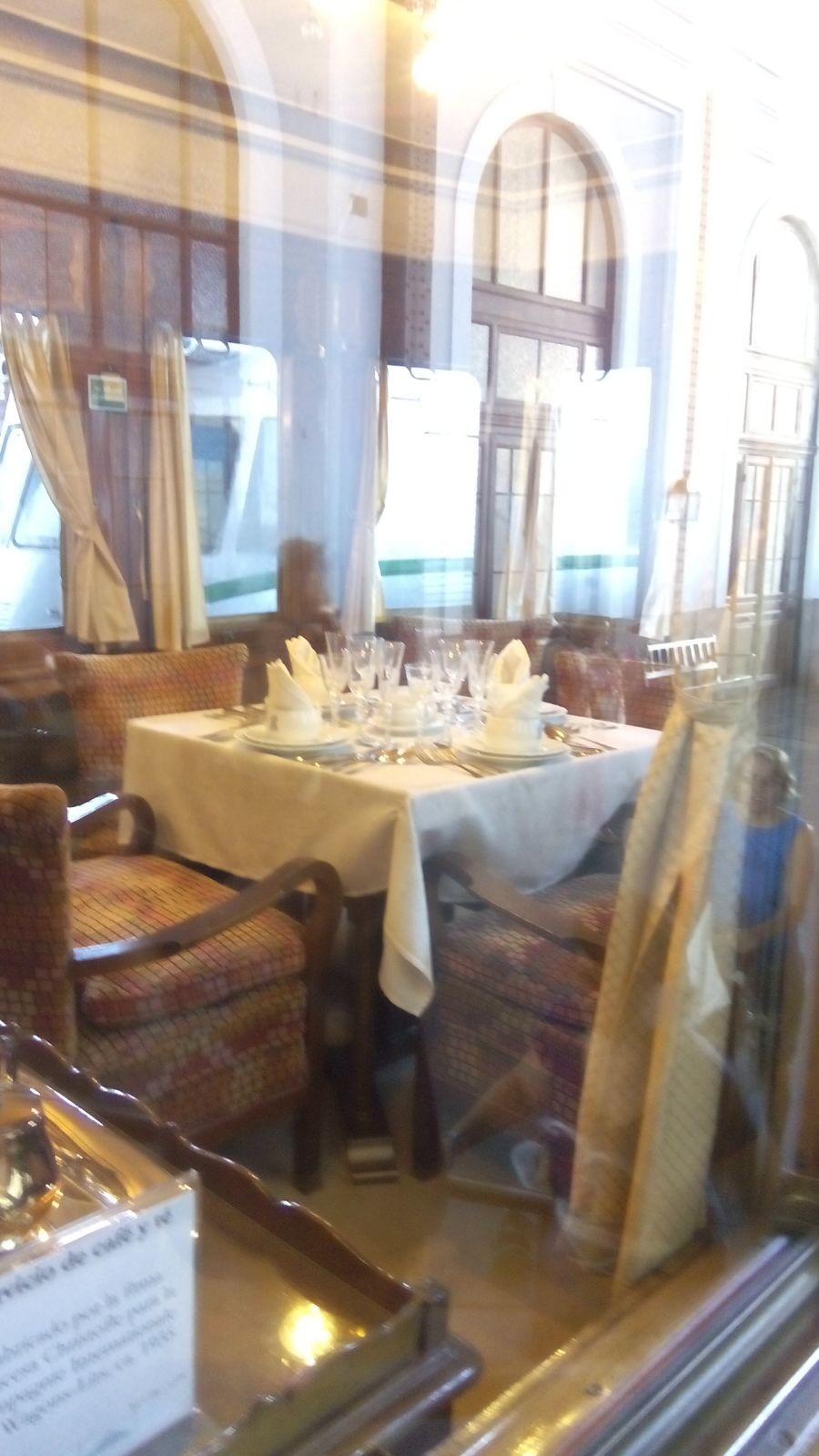
(An example of one of the decorated passenger carriages)
The train that seemed to be the most modern in my eyes was the Talgo II, which was one of the fastest in its time, as it reached speeds of up to 135km/h, whilst the steam engines on Platform I hardly even reached 80km/h, despite using much more fuel. Talgo was inaugurated in 1950 and its interior design is very different to any other, as it seems that first class was forgotten about and they instead focused on maintaining the comfort aspect whilst, at the same time, adding more seats. You will be able to board this train, sit down and pretend that you are one of the many passengers that were once sat there.
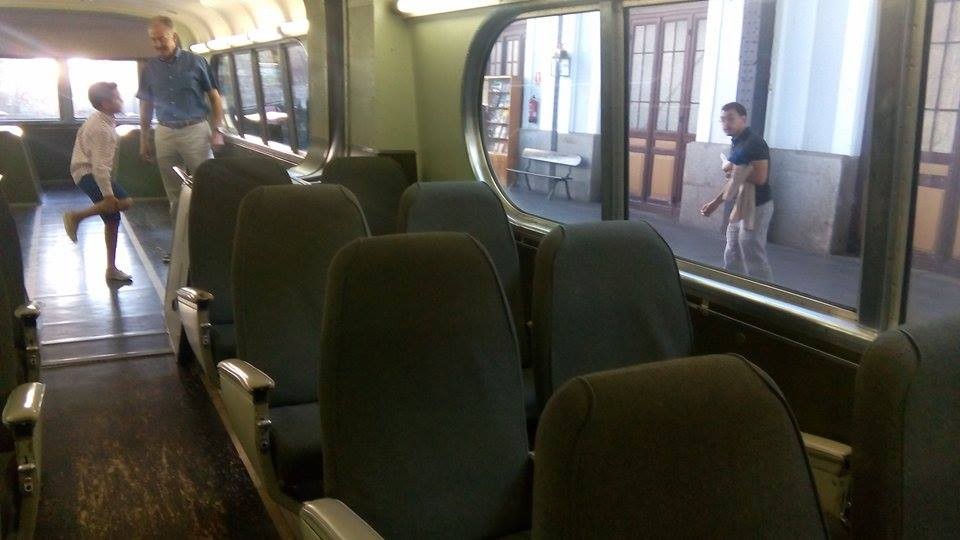
(Inside the Talgo II)
Clock collection
When you start the tour at Platform I, to the right you will find various rooms and, in one of them, there is a beautiful clock exhibition. The room isn't particularly large in size, but it is there where you will be able to see the eight types of clocks used on the railways, like: the platform clock, the pocket clock, the waiting room clock, the French one, and, finally, the wall clock.
Models and toys
This room is one of my favourites, as there are mock ups of the railway mechanism made of out models measuring up to 20 square metres! The models are incredibly well-made and are an idealised representation of the locomotives, cars and carriages. Upon entering the room, you will find three different models: the largest to the right, the medium-sized one directly in front of you (which is the one that I liked most), and the smallest to the right (it's pretty, but very simple when compared to the others). The models are fitted with an audio system and lights, which light up every five minutes or so, so they will start lighting up one by one and you will be able to see what the villages that were equipped to receive trains were like. In fact, in some of my photos, it seems like it's an actual city and not a mock up because the detail and quality are truly impressive.
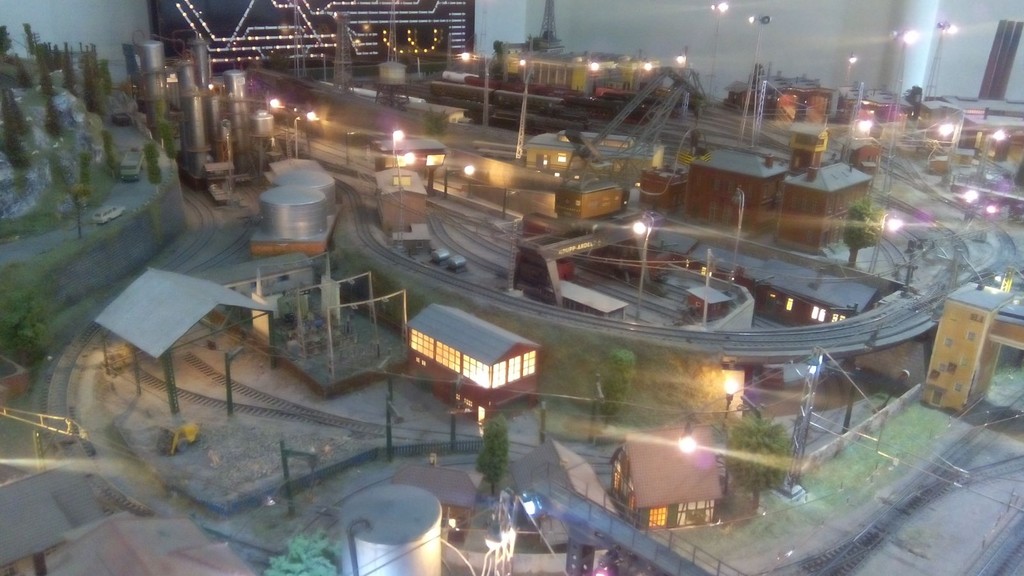
El Tren del Jardín
This area is the favourite amongst all the children! The train is fifteen years old and it can be considered as the only train-based attraction in Madrid. Upon buying a ticket at the office, which can be accessed at different periods during the day, you can enjoy a train journey on real trains that are much smaller in size than those used commercially. The small carriages are powered by a motor and travel along a specially-designed track: the inner part of the carriage is upholstered so that the passengers (adults as well as children) can sit in it. The prettiest thing about the circuit is that it allows children to learn some educational things: how the stations, line changes and turntables work, to name but a few. You have to bear in mind that, as it's an outdoor activity, it is very much subject to changes in weather conditions.
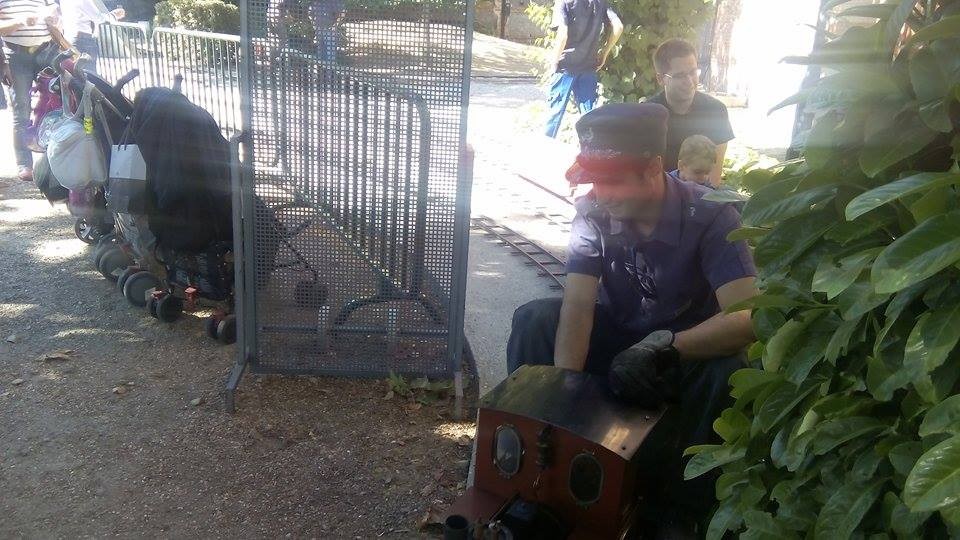
Infrastructure room
This room is one of the most boring, for lack of a better word, for children visiting the museum, but one of the most representative in terms of getting to know the machinery, the cables, and the telephones better, with an explanation of how the rails, sleepers, ballast, and electric overhead power cables work, to name but a few things. You have to be careful in this area, as there are many things on display that cannot be touched.
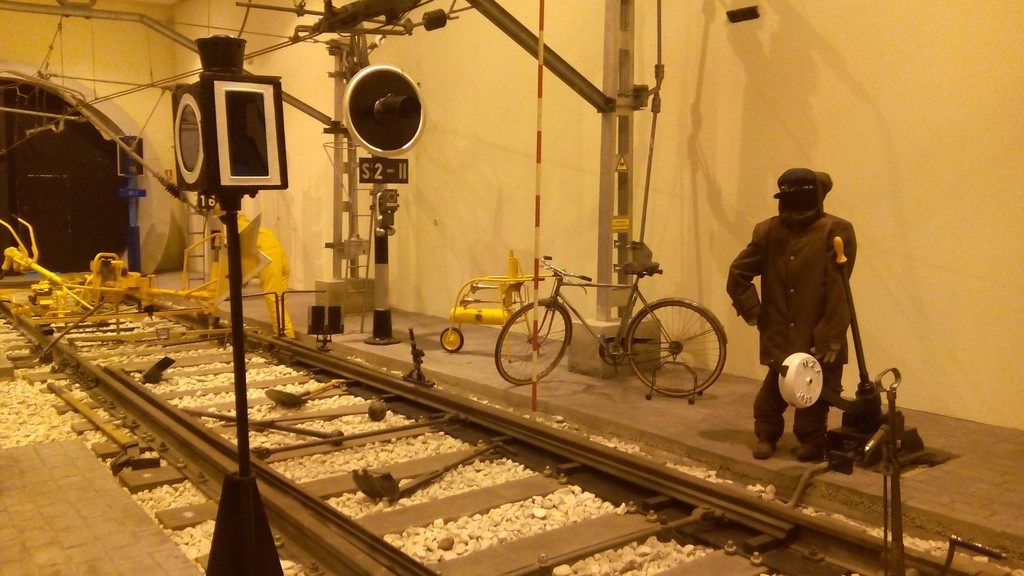
How do you get there?
You can get to the museum by taking Madrid's commuter rail system, Renfe Cercanías, which connects the city with the surrounding towns (which will get you into the railway mindset ready for your visit), and alighting at Delicias - this station is served by lines C1 and C10.
If you take the metro, you must alight at Delicias (line 3).
You can also get there by bus, taking one of the following routes: 8, 19, 45, 47, 59, 85 and 86.
How much does it cost to visit?
General admission costs 6€.
Admission for children under the age of 4 and senior citizens (over 65 years of age) is discounted to 4€.
Disabled persons can visit for just 1€.
The admission price on Sundays is fixed at just 3€, which is the amount that I paid to visit. I highly recommend going on this particular day because it seems like student discount isn't offered.
What are the museum's opening hours?
When compared to other museums in Madrid, like the Prado or the Royal Palace, the Railway Museum isn't considered to stay open very late, If you want to visit, you must go before 3pm, as that is when the museum closes to the public for the day (final entry is 20 minutes before closing time). The museum is open from 9:30am, Tuesday to Friday, and opens at 10am on both Saturdays and Sundays.
Recommendations
- Go on Sundays because it's cheaper.
- If you have younger siblings or children, bring them - they are the ones that generally enjoy the museum the most.
 What to see Madrid,
Madrid,
Spain
What to see Madrid,
Madrid,
Spain






































